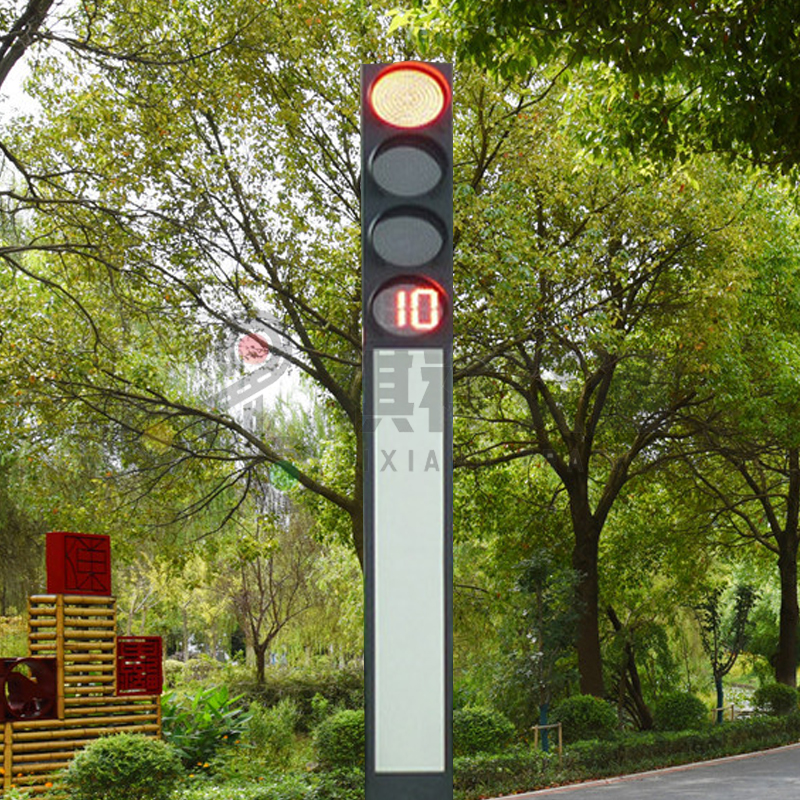In urban environments, pedestrian safety is the most important issue. One of the most effective tools for ensuring safe intersections is integrated pedestrian traffic lights. Of the various designs available, the 3.5m integrated pedestrian traffic light stands out for its height, visibility and functionality. This article takes an in-depth look at the manufacturing process of this important traffic control device, exploring the materials, technology and assembly techniques involved.
Understand the 3.5m integrated pedestrian traffic light
Before we dive into the manufacturing process, it’s important to understand what a 3.5m integrated pedestrian traffic light is. Typically, this type of traffic light is designed to be installed at a height of 3.5 meters so that it can be easily seen by both pedestrians and drivers. The integration aspect refers to combining various components (such as signal lights, control systems, and sometimes even surveillance cameras) into a single unit. This design not only enhances visibility but also simplifies installation and maintenance.
Step 1: Design and Engineering
The manufacturing process begins with the design and engineering phase. Engineers and designers work together to create blueprints that comply with safety standards and local regulations. This stage includes selecting appropriate materials, determining optimal height and viewing angles, and integrating technologies such as LED lights and sensors. Computer-aided design (CAD) software is often used to create detailed models that simulate how traffic lights would operate in real-life scenarios.
Step 2: Material Selection
Once the design is complete, the next step is material selection. The main materials used in the construction of the 3.5m integrated pedestrian traffic light include:
- Aluminum or Steel: These metals are commonly used for poles and housings due to their strength and durability. Aluminum is lightweight and corrosion-resistant, while steel is strong, durable and long-lasting.
- Polycarbonate or Glass: The lens covering the LED light is usually made of polycarbonate or tempered glass. These materials were chosen for their transparency, impact resistance and ability to withstand harsh weather conditions.
- LED Lights: Light-emitting diodes (LEDs) are favored for their energy efficiency, long life, and bright lighting. They are available in a variety of colors, including red, green and yellow, to indicate different signals.
- Electronic Components: This includes microcontrollers, sensors and wiring that aid in traffic light operation. These components are critical to the integrated functionality of the device.
Step 3: Fabricate Components
With the materials in hand, the next stage is to manufacture the individual components. This process usually involves:
- Metal Fabrication: Aluminum or steel is cut, shaped and welded to form the stem and housing. Advanced technologies such as laser cutting and CNC machining are often used to ensure accuracy.
- Lens Production: Lenses are molded or cut to size from polycarbonate or glass. They are then treated to enhance their durability and clarity.
- LED Assembly: Assemble the LED light onto the circuit board and test its functionality. This step ensures that each light operates correctly before being integrated into the traffic light system.
Step 4: Assembly
Once all components are manufactured, the assembly process begins. This involves:
- Install LED Lights: The LED assembly is securely mounted inside the housing. We want to be careful to make sure the lights are positioned correctly for optimal visibility.
- Integrated Electronics: Installation of electronic components including microcontrollers and sensors. This step is critical to enable features such as pedestrian detection and timing control.
- Final Assembly: The housing is sealed and the entire unit is assembled. This includes connecting the rods and making sure all components are securely fastened.
Step 5: Testing and Quality Control
The 3.5m integrated pedestrian traffic light undergoes rigorous testing and quality control before deployment. This stage includes:
- Functional Testing: Each traffic light is tested to ensure that all lights are functioning properly and that the integrated system operates as expected.
- Durability Testing: This unit is tested in a variety of environments to ensure it can withstand extreme weather conditions, including heavy rain, snow, and high winds.
- Compliance Check: Check the traffic light against local regulations and safety standards to ensure it meets all necessary requirements.
Step 6: Installation and Maintenance
Once the traffic light has passed all tests, it is ready for installation. This process usually involves:
- Site Assessment: Engineers evaluate the installation site to determine the best location for visibility and safety.
- Installation: Mount the traffic light on a pole at the specified height and make electrical connections.
- Ongoing Maintenance: Regular maintenance is essential to ensure your traffic lights remain functional. This includes checking LED lights, cleaning lenses and checking electronic components.
In conclusion
3.5m integrated pedestrian traffic lights are an important part of urban infrastructure designed to enhance pedestrian safety and streamline traffic flow. Its manufacturing process involves careful design, material selection and rigorous testing to ensure reliability and effectiveness. As cities continue to grow and develop, the importance of such traffic control devices will only increase, making an understanding of their production even more important.
Post time: Nov-01-2024







